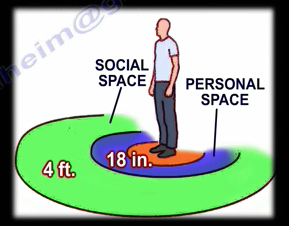Written by Nabil Ebraheim, MD and Molly Ebraheim
What are the golden ten seconds of patient care?
The first few seconds of the interaction between a physician and patient are very important. The golden ten seconds of patient care is the first interaction between the patient and the physician. The patient will make a decision within the first 10 seconds if they like and trust their doctor based on body language and unspoken words. During this critical time the patient determines their perception of you as a physician or a health care provider.

The following information is designed to teach physicians about the first 10 seconds of patient care and suggest what can be done to improve patient's perceptions.
Every patient relationship begins at first sight. How we appear to the patient when we enter the exam room is an important aspect of the patient's perception for the entire visit. From the moment we enter the exam room, the patient is watching how we present ourselves.
Enter the patient's room with a big smile and introduce yourself. Express joy and confidence, showing the patient that you are happy to see them and ready to treat their problem. Avoid appearing frozen or nervous. When you enter the patient's room, enter with an open position. Be aware of your body language and avoid appearing to have a closed attitude.
It is important to shake the patient's hand.
When you walk into the patient's exam room, offer a quality handshake to the patient. A standard firm grip handshake is appropriate for a professional introduction. The handshake should be neutral with the thumb on top of each hand. The handshake should result in a feeling of equality.

Establish and maintain eye contact with the patient.
Generally patients tend to probe the doctor's eyes, looking for positive or negative mood signs. The patient is looking for assurance. Maintaining eye contact will allow you and the patient to become closer during the visit. Eye contact will also help remove any barriers and will display to the patient that they have your attention. If you want your patient to remember your discussion, it is important to look at the patient when you are talking to them. Eye contact has a positive impact on memory retention and the recollection of information. The duration of eye contact should be long enough to notice the color of the patient's eyes.

Avoid distraction when seeing the patient.
Listen to the patient! Give them your undivided attention and talk to the patient face to face. Do not allow yourself to become distracted by your cell phone, your notes, checking medical records, the computer, or x-rays. It is best that you study all of the patient's information before you go into the room, so that you can give the patient your undivided attention.
Pay attention to the position of your own body!
Regardless if you are standing or sitting, do not turn to the side or cross your arms. During the interaction with the patient, it is important to maintain a good posture. Broaden your shoulder and stand up straight when you enter the patient's room and during the entire duration of the encounter.
Avoid exhibiting poor posture.
When talking to the patient, imagine that you are being watched by the patient. Focus on your body language and stand or sit confidently. Aim to have a neutral position with your arms and hands placed at your sides. Typical signs of poor posture include leaning your head forward, rounded shoulders, leaning backwards, and bending your knees. Do not stand with your hands placed firmly on your hips. This gives the patient an impression of dominance or a defensive attitude. Remember, you actions in front of the patient speak louder than your words! Body language accounts for 55% of communication. Body language includes facial expressions, eye contact, posture and gestures.

Verbal communication accounts for only 7% of the communication or the actual words that are said. This is the actual medical conversation between the healthcare provider and patient.
How a person sounds accounts for 38% of communication. Pay extra attention to the inflection of your voice. Avoid changes in the pitch or tone of your voice. Keep a calm tone of voice to create a calm and soothing environment for the patient.
Paralinguistics
Paralinguistic is a type of vocal communication without the use of language. It includes voice inflection, pitch, rhythm, loudness and tone. A slow rhythm with a hush tone indicates gentleness and concern. A heavy pitch with rising inflection indicates anger or enthusiasm.
Personal Space
Avoid being physically too close to the patient during the visit or this could create discomfort and annoyance. The personal distance between the doctor and the patient should be between 18 inches to 4 feet. Any closeness less than 18 inches between the doctor and patient, could lead to the encounter becoming too intimate or too close for the patient. Any distance more than 4 feet between the doctor and patient is appropriate for social gatherings, however it is not appropriate for clinical visits. A male doctor should always have a female employee present during the examination of a female patient. Try to limit exposure of the patient to only the area that is needing to be examined. We need to have respect for cultural and religious diversity. If there is a language barrier, have an interpreter present so the patient can understand what the doctor is saying.

Find ways to connect with the patient. Gestures towards the patients such as giving the okay sign or a thumbs up has a positive impact on the patient's perception of you as a physician. Simple gestures like handing the patient your card is an effective way to build patient satisfaction and end the visit on a positive note. Also, make a point to tell the patient, "It was good to see you again" or, "It was nice talking to you". These types of statements will leave a positive lasting impression.
A special thanks toMolly Ebraheim for her contributions to this article.
For more information, visit my YouTube Channel:
https://www.youtube.com/user/nabilebraheim
